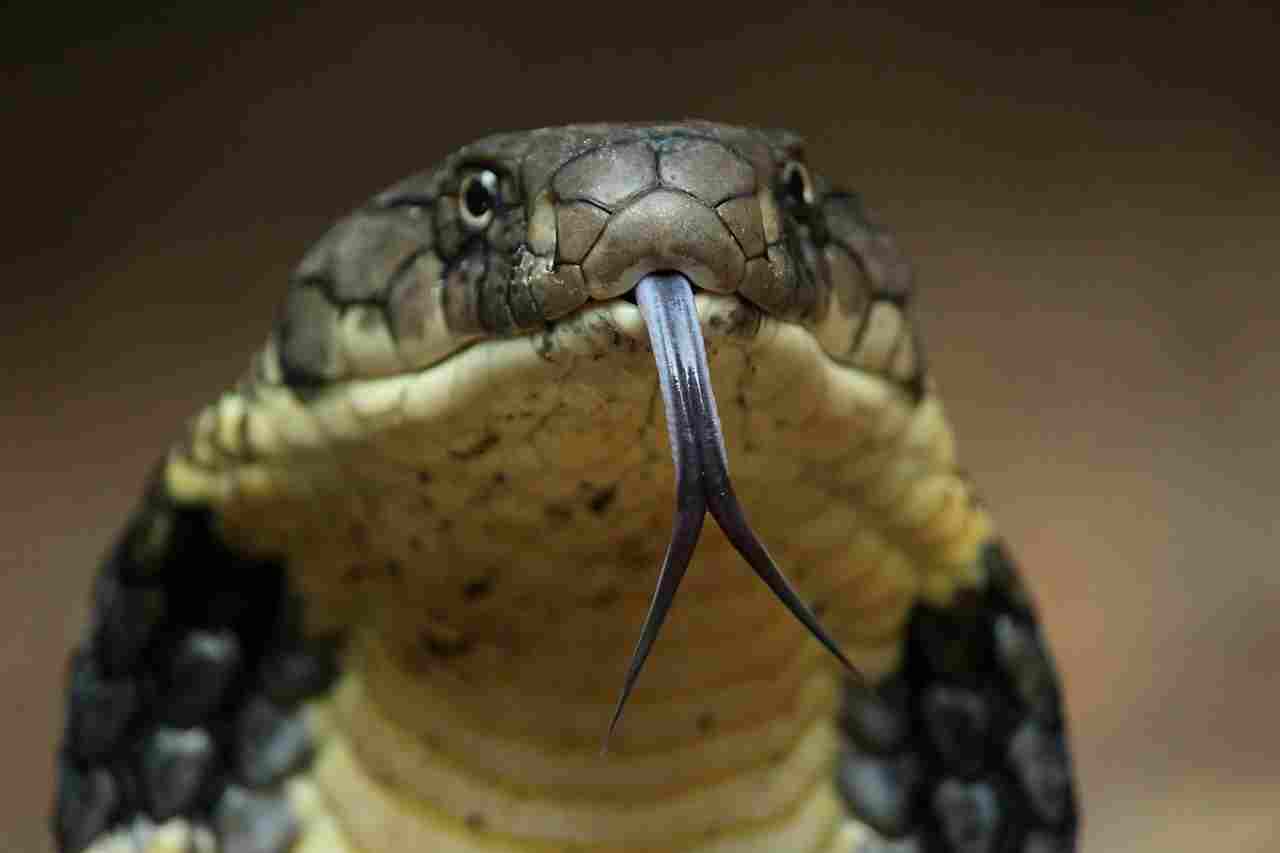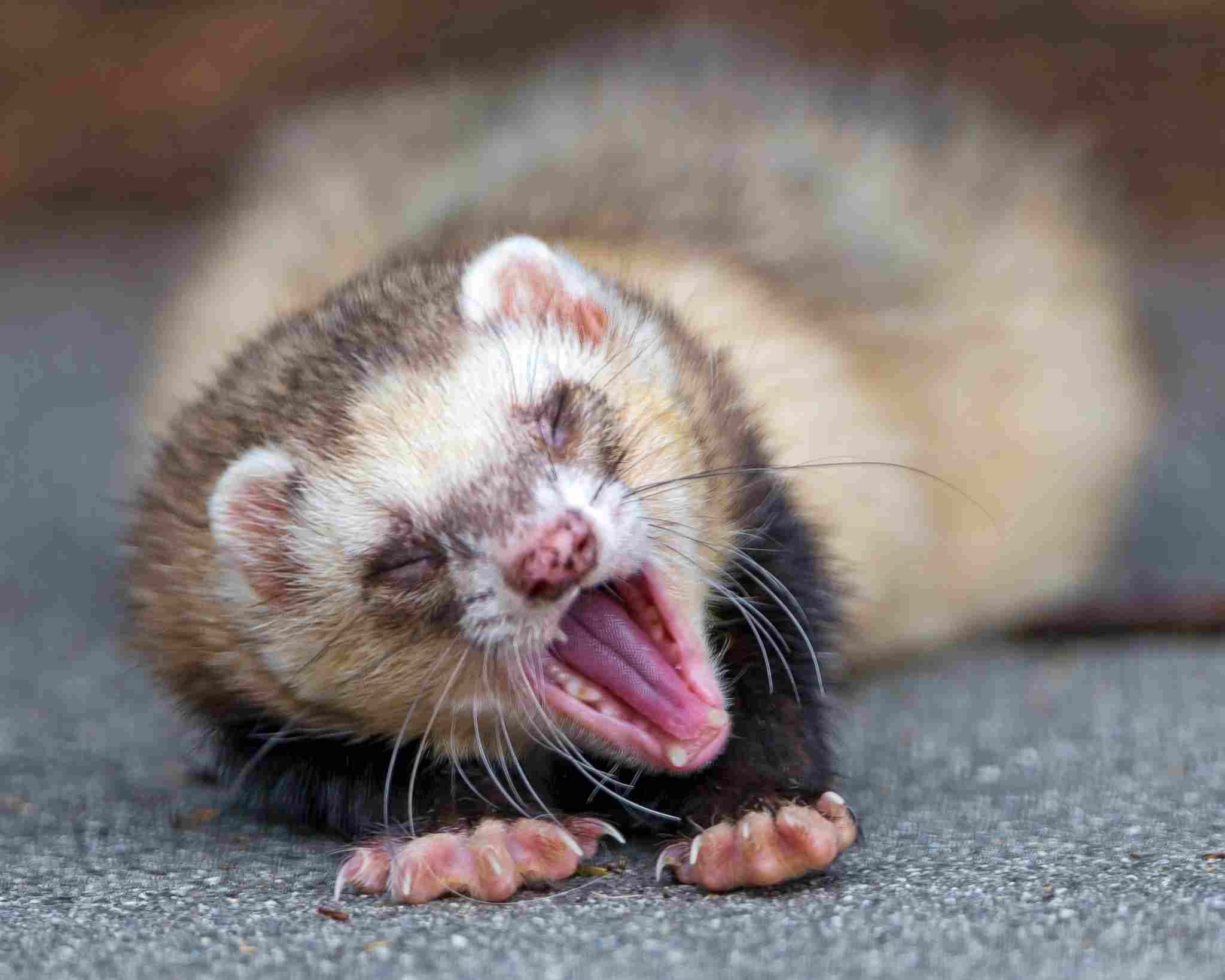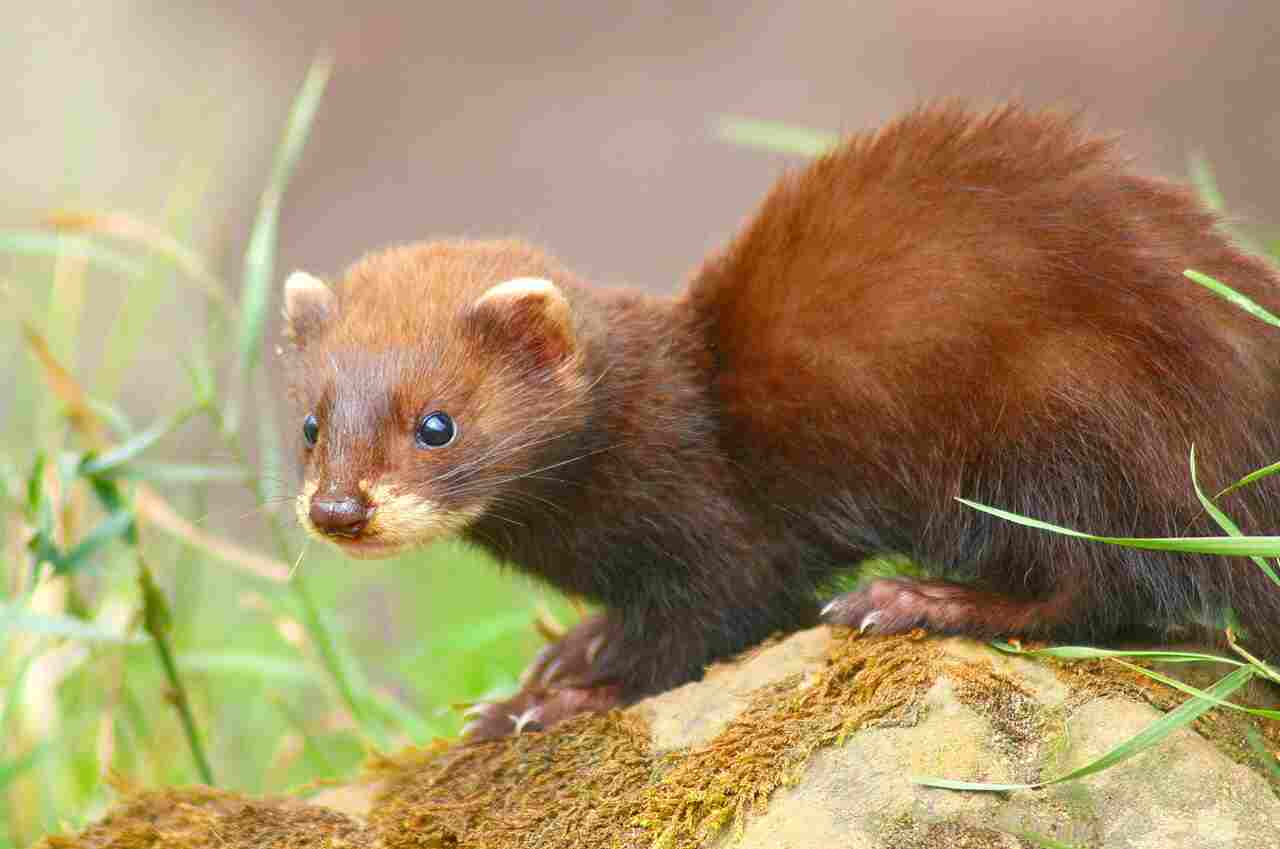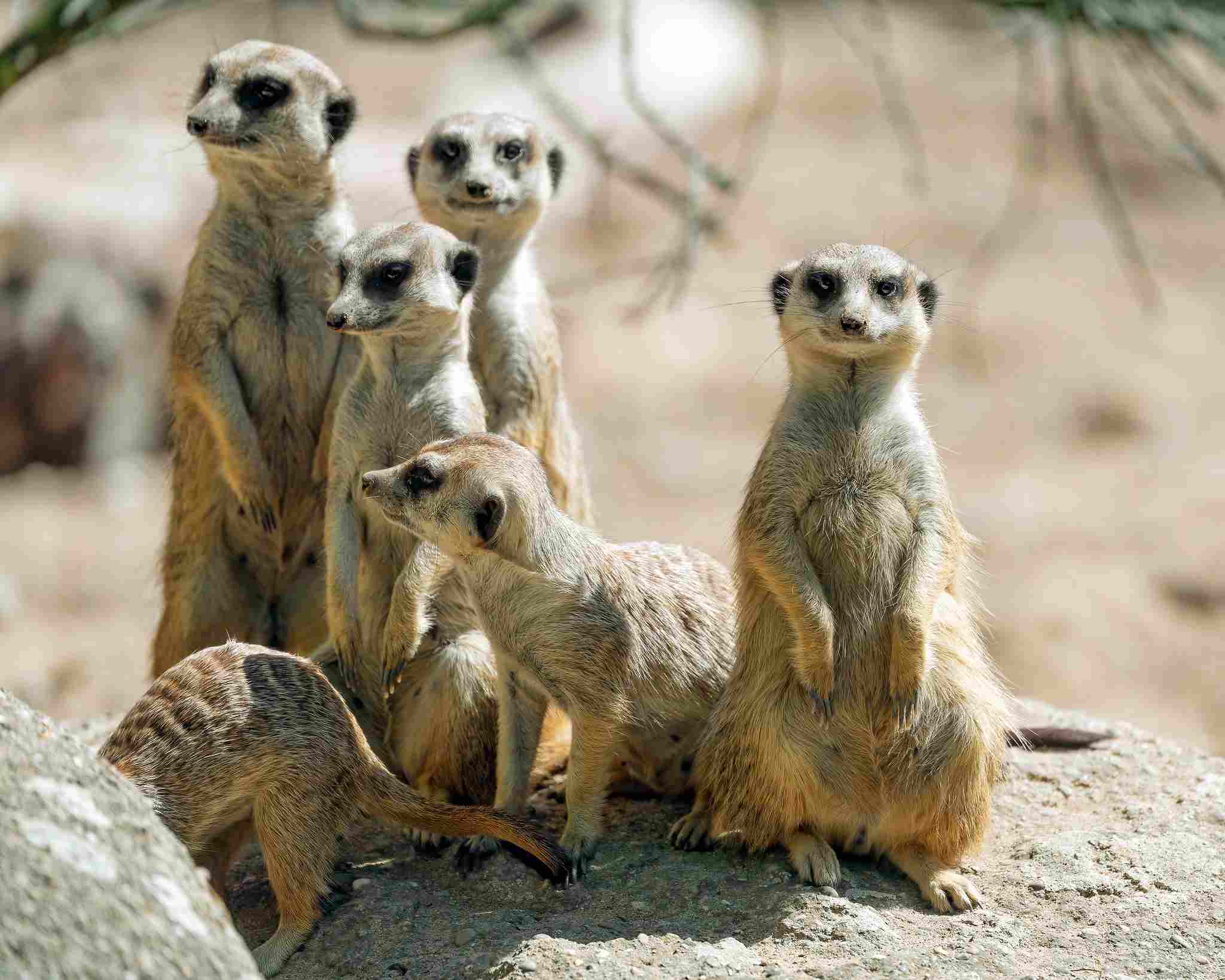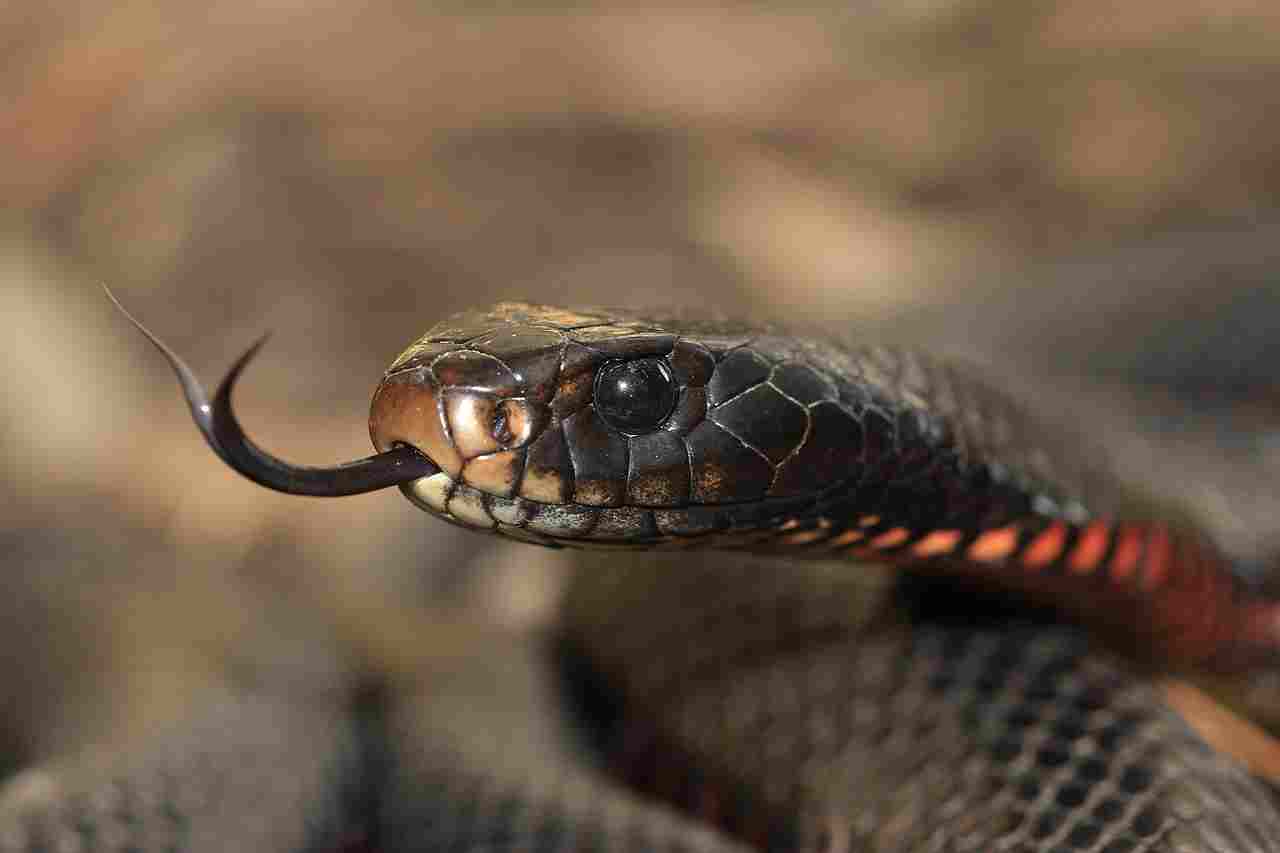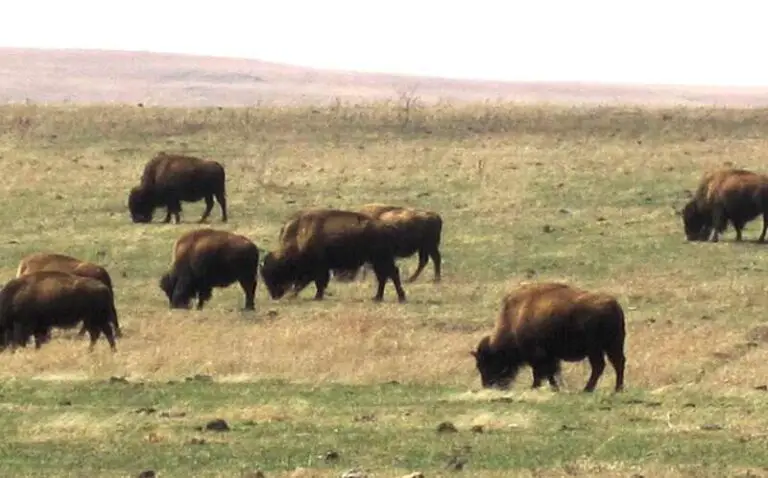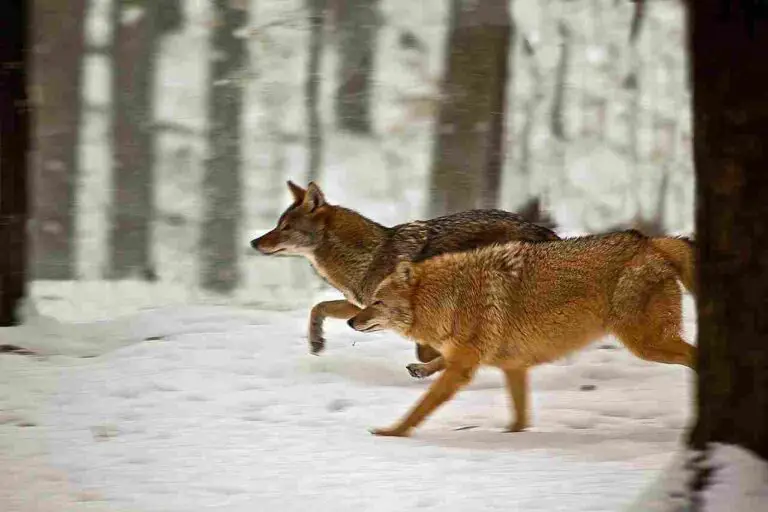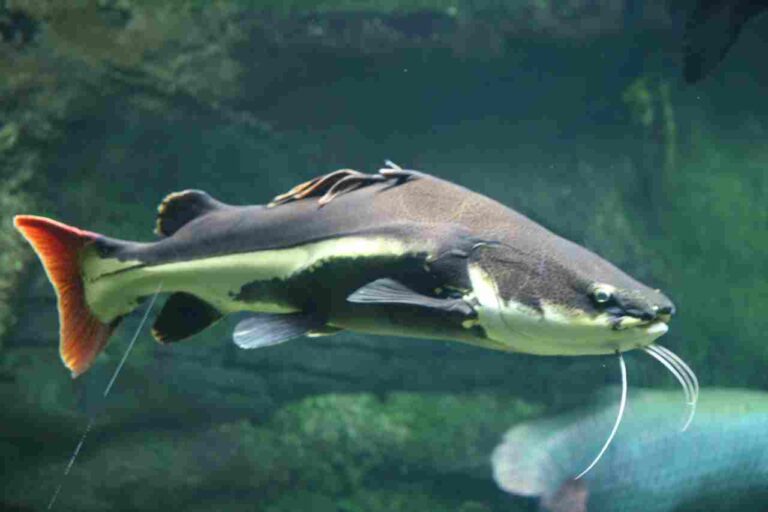Mongoose Vs Cobra Who Would Win, Overall Comparison
A hypothetical confrontation between a mongoose and a cobra, two species known for their distinct characteristics, provides an interesting exploration of their potential interactions. Mongooses, recognized for their agility, speed, and hunting skills, may have the upper hand in a one-on-one encounter with a cobra. This analysis delves into their size, strength, agility, jaws, defensive features, and locomotion to speculate on the likely victor in this hypothetical scenario.
Mongoose vs Cobra: Assessing the Likely Victor in a Confrontation
In a hypothetical scenario involving a mongoose and a cobra, the mongoose is likely to emerge victorious in a fight due to its heavier weight, greater strength, higher speed and agility, stronger jaws, thick hide, and better locomotion.
I). Weight and Strength Advantage:
– Mongooses, typically heavier and possessing greater strength than cobras, have a significant advantage in terms of both size and power. This weight and strength advantage provides the mongoose with the ability to withstand and counter the cobra’s attacks.
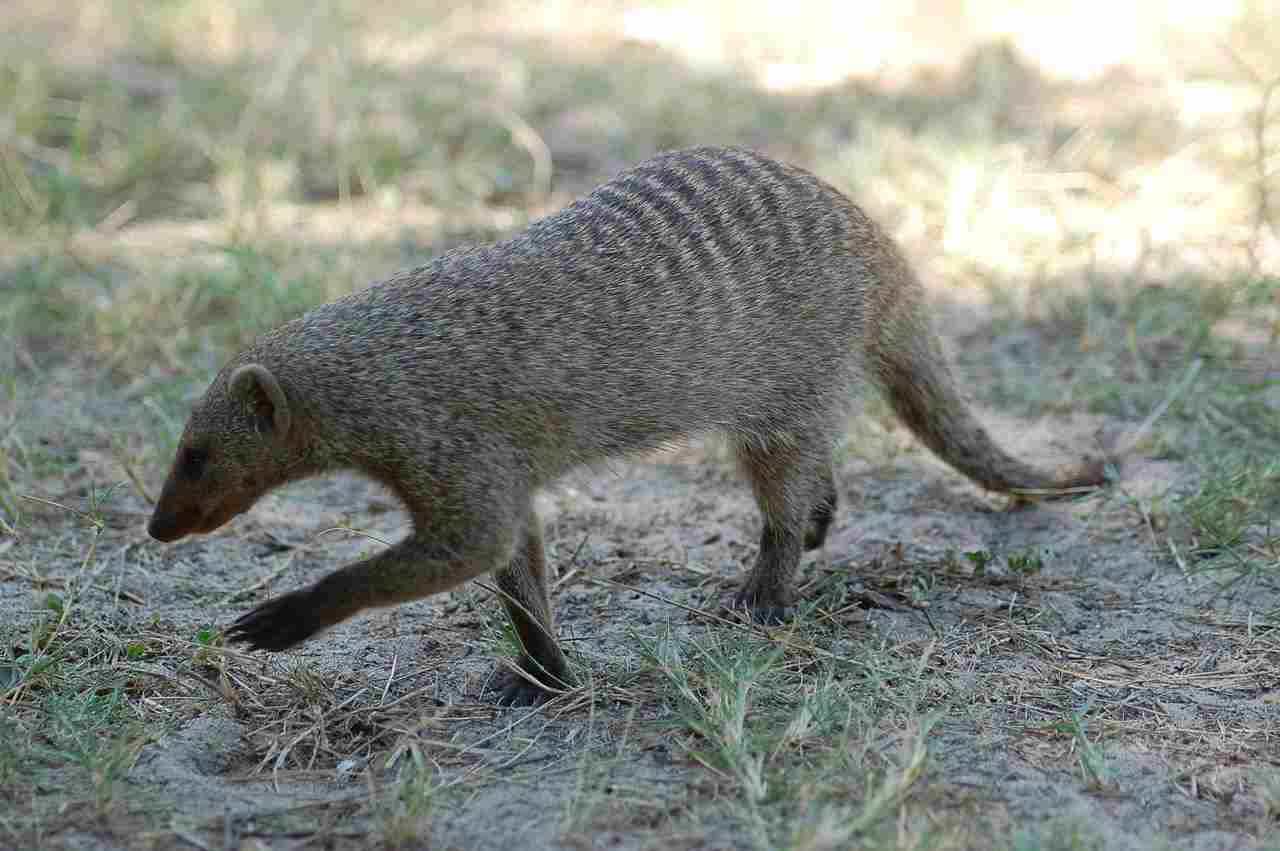
II). Speed and Agility:
– Mongooses are known for their exceptional speed and agility, allowing them to swiftly evade the strikes of a cobra. This agility enables the mongoose to control the dynamics of the confrontation and strategically approach the cobra to launch counterattacks.
III). Strong Jaws:
– Mongooses possess strong jaws that aid in both offense and defense. The powerful jaws allow the mongoose to deliver effective bites and potentially neutralize the cobra’s threat. The mongoose’s bite force becomes a crucial factor in determining the outcome of the confrontation.
IV). Thick Hide:
– Mongooses have a relatively thick hide, providing an additional layer of protection against the cobra’s strikes. This defensive feature reduces the impact of the cobra’s venomous bites and enhances the mongoose’s durability in a physical encounter.
V). Better Locomotion:
– Mongooses exhibit efficient and rapid locomotion, enhancing their ability to outmaneuver the cobra. The mongoose’s swift movements contribute to its overall dominance in controlling the pace and direction of the confrontation.
VI). Overall Dynamics:
– In this hypothetical scenario, the mongoose is likely to prevail in a fight against a cobra due to its heavier weight, greater strength, higher speed and agility, stronger jaws, thick hide, and better locomotion. These combined attributes give the mongoose a decisive advantage in overcoming the cobra’s formidable defenses and securing victory in the confrontation.
*Details of Comparison
| Criteria | Mongoose | Cobra |
| Taxonomy | Carnivora, Herpestidae, Genus: Herpestes |
Squamata, Elapidae, Genus: Naja
|
| Appearance | Slender, furry, brown/gray |
Elongated, scaly, variable coloration
|
| Size | 9-28 inches (excluding tail) |
1-8 feet (species dependent)
|
| Weight | 1-4 kg |
0.5-4 kg (species dependent)
|
| Bite Force (PSI) | 200-700 PSI | 200-350 PSI |
| Physical Offensive Adv. | Sharp claws, teeth, agility |
Venomous bite, hood, striking capability
|
| Physical Defensive Adv. | Agility, quick reflexes |
Venomous bite, hooding behavior
|
| Speed | Up to 32 km/h (20 mph) |
4-8 km/h (2.5-5 mph) (species dependent)
|
| Agility | Highly agile, rapid movements |
Agile, less so compared to mongoose
|
| Overall Physical Capacity | Versatile |
Specialized for venomous predation
|
| Habitat Preferences | Various, including grasslands, forests |
Diverse environments, e.g., grasslands, forests
|
| Tracks | Paw prints with claw marks |
Belly drags with no limb prints
|
| Lifespan | 6-10 years in the wild |
12-20 years in the wild (species dependent)
|
| Mode of Feeding | Carnivorous, broader diet |
Carnivorous, primarily rodents and birds
|
| Intelligence | Problem-solving skills, social intelligence |
Instinctive behaviors, less known for complexity
|
| Social Behavior | Often in social groups |
Generally solitary (except during mating)
|
| Reproduction | Viviparous (live births) |
Oviparous (lays eggs)
|
| Parental Behavior | Cooperative breeding, group assistance |
Limited parental care, female guards eggs
|
| Proximity to Humans | Adapts to urban areas, human settlements |
Near human habitats, especially in rural areas
|
| Behavior Toward Humans | Varied responses, may become accustomed |
Generally avoids, defensive if threatened
|
| Danger Posed to Humans | Rarely poses a threat, aggressive if provoked |
Venomous bite poses significant threat
|
| Precautions | Caution when encountering, avoid provoking |
Extreme caution due to venom, seek professional help
|
| Conservation Status | Varies by species, some face threats |
Varies by species, some face threats
|
1. Taxonomy
Mongoose:
Order: Carnivora
Family: Herpestidae
Genus: Herpestes
Species: Various species, e.g., Indian mongoose (Herpestes edwardsii)
Cobra:
Order: Squamata
Family: Elapidae
Genus: Naja
Species: Various species, e.g., Indian cobra (Naja naja)
2. Appearance
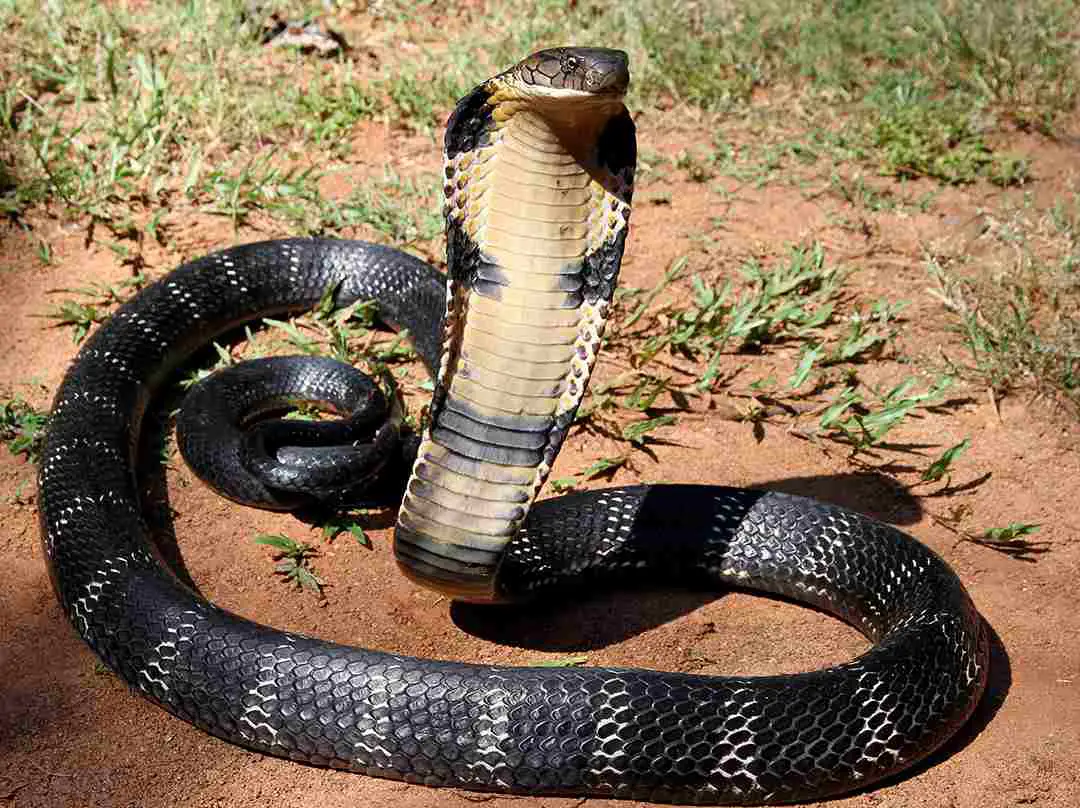
Mongoose:
Slender body, fur-covered
Typically brown or gray with lighter underparts
Sharp claws and a long, tapering tail
Cobra:
Elongated body, covered in scales
Variable coloration, often with distinct patterns
Hood when threatened, displaying a threat posture
Comparison: Mongoose has a furry appearance, while the cobra exhibits a scaly, sleek body, adapting to their different environments.
Ecological Implications: These physical traits aid in their respective ecological roles, with the mongoose relying on fur for insulation and the cobra’s scales providing protection.
3. Size
Mongoose:
Length varies from about 9 to 28 inches (excluding tail)
Cobra:
Length ranges from 1 to 8 feet, depending on the species
Comparison: Cobras are generally larger than mongooses, with size variations influenced by species.
Ecological Implications: Size impacts ecological niche and dietary requirements, with larger cobras preying on comparatively larger animals.
4. Weight
Mongoose:
Typically 1 to 4 kg
Cobra:
Weight varies from 0.5 to 4 kg
Comparison: Similar weight ranges, but mongoose species tend to be slightly heavier on average.
Ecological Implications: Weight influences mobility and energy expenditure, impacting hunting and survival strategies in their ecosystems.
5. Bite Force (PSI)
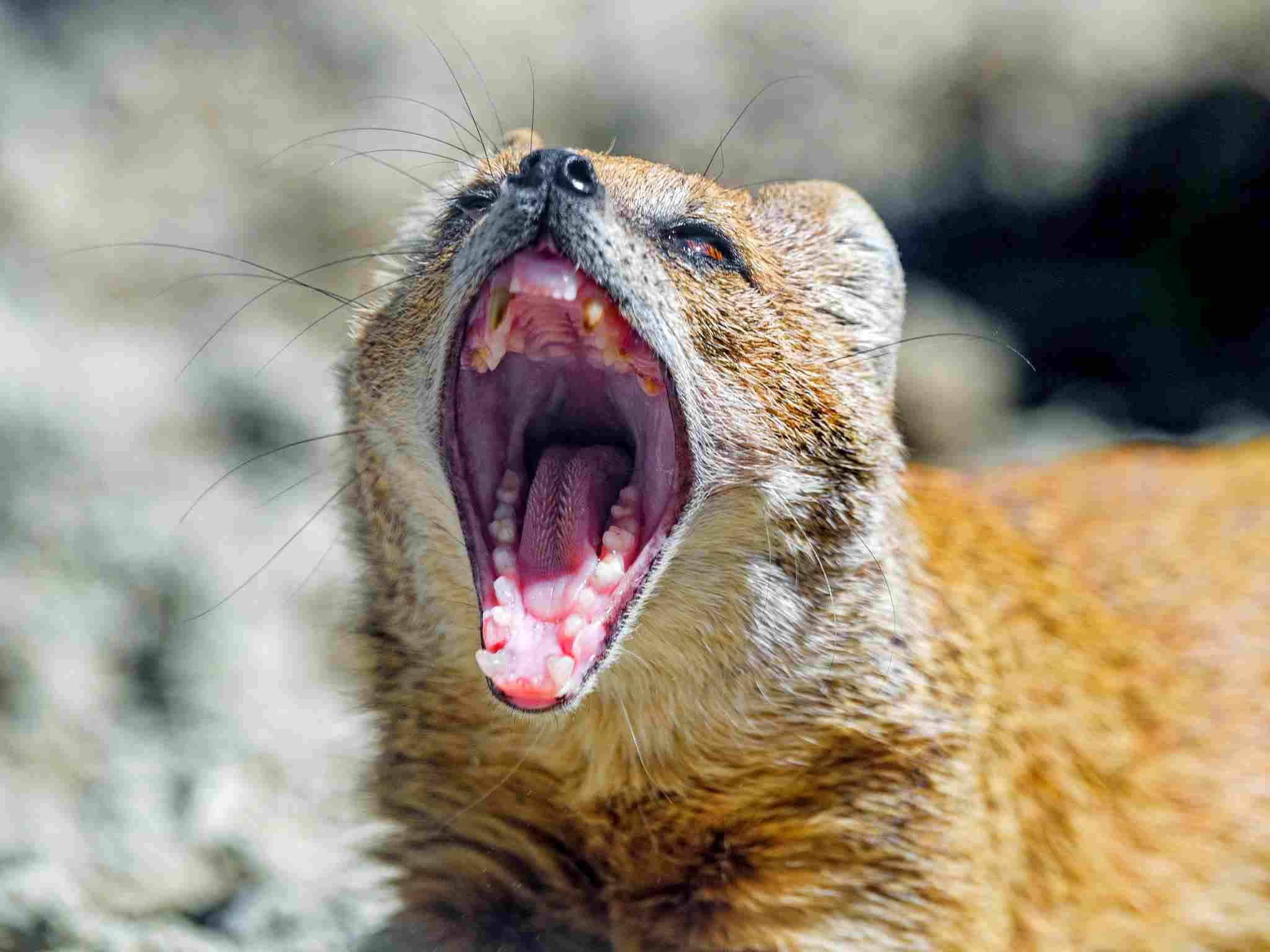
Mongoose:
Bite force ranges from 200 to 700 PSI
Cobra:
Bite force varies from 200 to 350 PSI
Comparison: Mongooses generally have a higher bite force than cobras.
Ecological Implications: Bite force affects hunting efficiency and prey selection, contributing to their roles in maintaining ecological balance.
6. Physical Offensive Advantages
Mongoose:
Sharp claws and teeth for hunting and defense
Agile and adept at avoiding strikes
Cobra:
Venomous fangs for prey immobilization
Hood and striking capability for defense
Comparison: The mongoose relies on physical prowess, while the cobra employs venom as a primary offensive tool.
Ecological Implications: These offensive adaptations contribute to their roles as predators in their respective ecosystems.
7. Physical Defensive Advantages
Mongoose:
Quick reflexes and agility for evasion
Ability to stand and fight if necessary
Cobra:
Venomous bite as a deterrent
Hooding behavior to appear larger and intimidate threats
Comparison: Mongooses utilize agility, while cobras rely on venom and threat displays for defense.
Ecological Implications: These defensive strategies help maintain a balance between predators and prey in their habitats.
8. Speed (Km/hour or Mile/hour)
Mongoose:
Can reach speeds up to 32 km/h (20 mph)
Cobra:
Slower, with an average speed of 4-8 km/h (2.5-5 mph)
Comparison: Mongooses are significantly faster than cobras.
Ecological Implications: Speed impacts hunting success and the ability to escape from predators or threats.
9. Agility
Mongoose:
Highly agile, capable of rapid movements and quick direction changes
Cobra:
Agile but less so compared to mongooses, especially in confined spaces
Comparison: Mongooses exhibit superior agility compared to cobras.
Ecological Implications: Agility influences hunting efficiency and evasion from potential threats, shaping their ecological roles.
10. Overall Physical Capacity
Mongoose:
Possesses a combination of speed, agility, and strength
Adapted for both offense and defense in diverse environments
Cobra:
Relies on venom and threat displays, with a focus on ambush hunting
Comparison: The mongoose’s physical capacity is more versatile, while the cobra excels in specific predatory strategies.
Ecological Implications: Diverse physical capacities contribute to their roles in maintaining ecological balance within their habitats.
11. Habitat Preference(s)
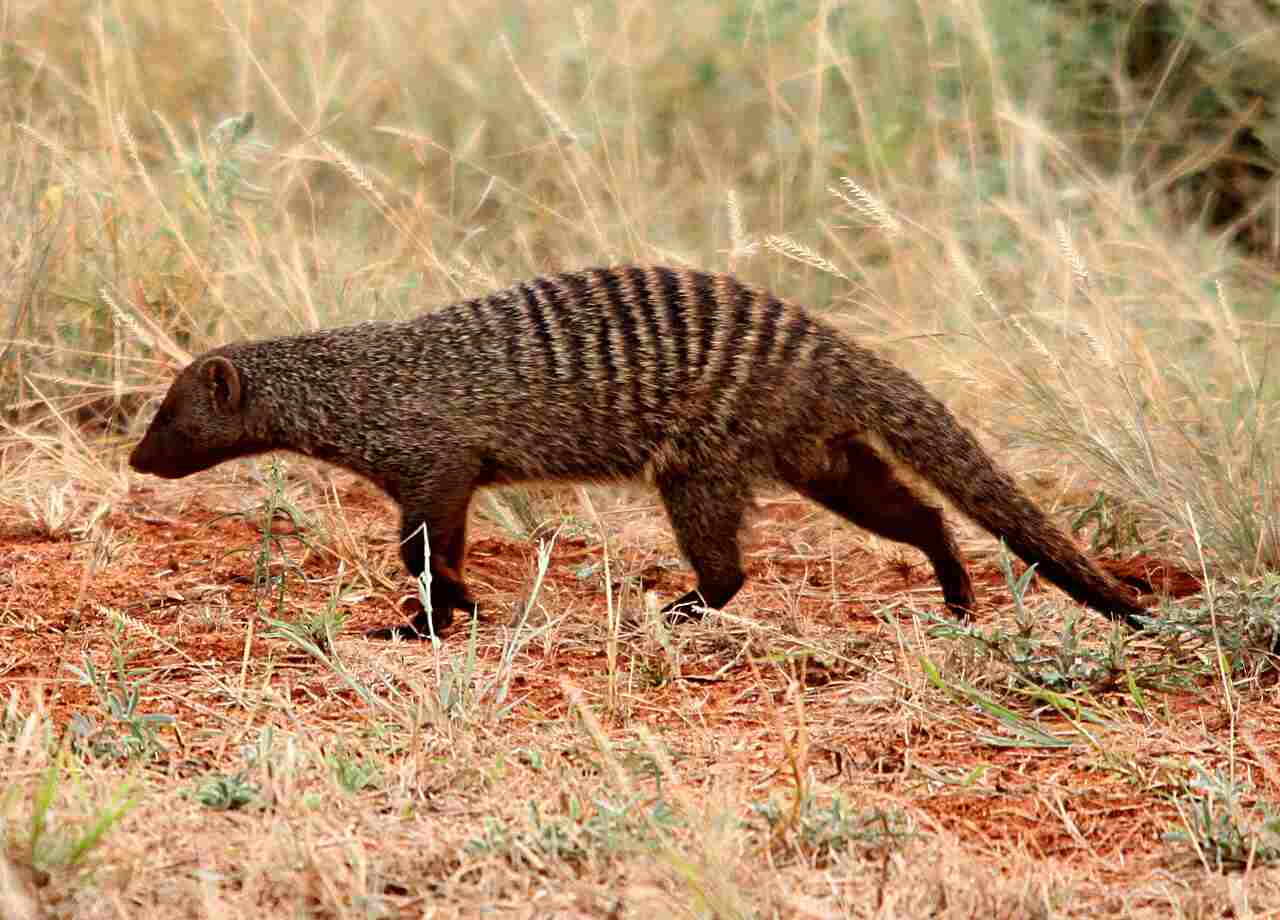
Mongoose:
Found in a variety of habitats, including grasslands, forests, and urban areas
Cobra:
Adapts to diverse environments, including grasslands, forests, and farmlands
Comparison: Both species show adaptability to different habitats, although mongooses may have a slightly broader range.
Ecological Implications: Their habitat preferences impact the distribution of these species and their interactions with other organisms.
12. Tracks
Mongoose:
Paw prints with distinct claw marks
Cobra:
Belly drags with no visible limb prints
Comparison: Mongoose tracks show more defined paw prints, while cobras leave distinctive belly drags.
Ecological Implications: Tracking can be useful in studying their movements and understanding their behavior within ecosystems.
13. Lifespan
Mongoose:
Typically 6 to 10 years in the wild
Cobra:
Generally 12 to 20 years in the wild
Comparison: Cobras tend to have a longer lifespan compared to mongooses.
Ecological Implications: Lifespan influences population dynamics and ecological interactions within their respective communities.
14. Mode of Feeding
Mongoose:
Carnivorous, feeding on small mammals, birds, insects, and eggs
May also consume fruits and vegetation occasionally
Cobra:
Carnivorous, primarily feeding on rodents and birds
Relies on venom to immobilize and digest prey
Comparison: Both are carnivores, but the mongoose has a broader diet, including fruits and vegetation.
Ecological Implications: Varied feeding habits contribute to their roles in controlling pest populations and influencing plant dispersal.
15. Intelligence
Mongoose:
Exhibits problem-solving skills
Lives in social groups, indicating social intelligence
Cobra:
Displays instinctive behaviors, but less known for complex problem-solving
Comparison: Mongooses showcase higher cognitive abilities, especially in social contexts.
Ecological Implications: Intelligence influences their adaptive behaviors and interactions within their ecosystems.
16. Social Behavior
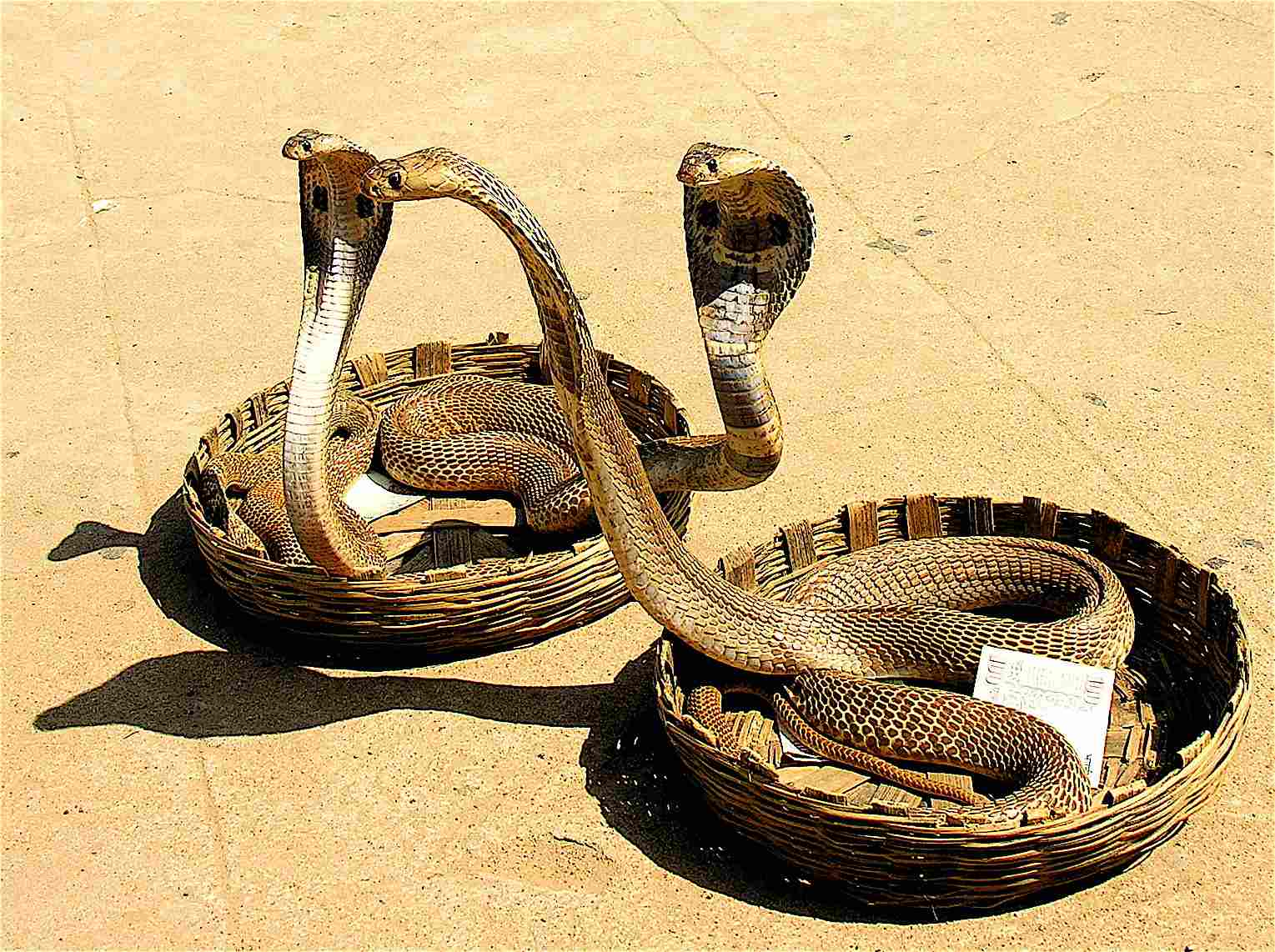
Mongoose:
Often lives in social groups, fostering cooperation for defense and hunting
Cobra:
Generally solitary, except during mating or when caring for offspring
Comparison: Mongooses are notably more social, while cobras are solitary by nature.
Ecological Implications: Social behavior affects their ecological roles, such as cooperative hunting or individual predation strategies.
17. Mode of Reproduction
Mongoose:
Typically gives birth to live young (viviparous)
Cobra:
Lays eggs (oviparous)
Comparison: Reproductive modes differ, with mongooses having live births and cobras laying eggs.
Ecological Implications: Reproductive strategies impact population dynamics and the distribution of these species within ecosystems.
18. Parental Behavior
Mongoose:
Exhibits cooperative breeding
Members of the group may assist in raising and protecting offspring
Cobra:
Limited parental care, with the female guarding the eggs until hatching
Comparison: Mongooses show a higher degree of parental cooperation, while cobras exhibit more solitary care.
Ecological Implications: Parental behaviors influence the survival and development of offspring, affecting population dynamics.
19. Proximity to Human-Inhabited Areas
Mongoose:
Often found in close proximity to human settlements, adapting to urban environments
Cobra:
Can be found near human habitats, especially in rural areas
Comparison: Both species may share habitats with humans, with mongooses more commonly adapting to urban living.
Ecological Implications: Human proximity impacts their interactions with domestic animals and potential conflicts with humans.
20. Behavior Toward Humans
Mongoose:
Varied responses; some species may be wary, while others may become accustomed to human presence
Cobra:
Generally avoids humans but may become defensive if threatened
Comparison: Mongooses may exhibit more diverse behaviors towards humans, while cobras typically avoid direct contact.
Ecological Implications: Human interactions can influence the behavior and survival of these species in human-altered environments.
21. Danger Posed to Humans
Mongoose:
Rarely poses a direct threat to humans; may become aggressive if cornered
Cobra:
Venomous bite poses a significant threat; some species can be lethal
Comparison: Cobras pose a higher danger to humans due to their venomous bites, while mongooses are generally less hazardous.
Ecological Implications: Human safety considerations are essential, and understanding the potential dangers helps in conservation and management efforts.
22. Associated Precautions
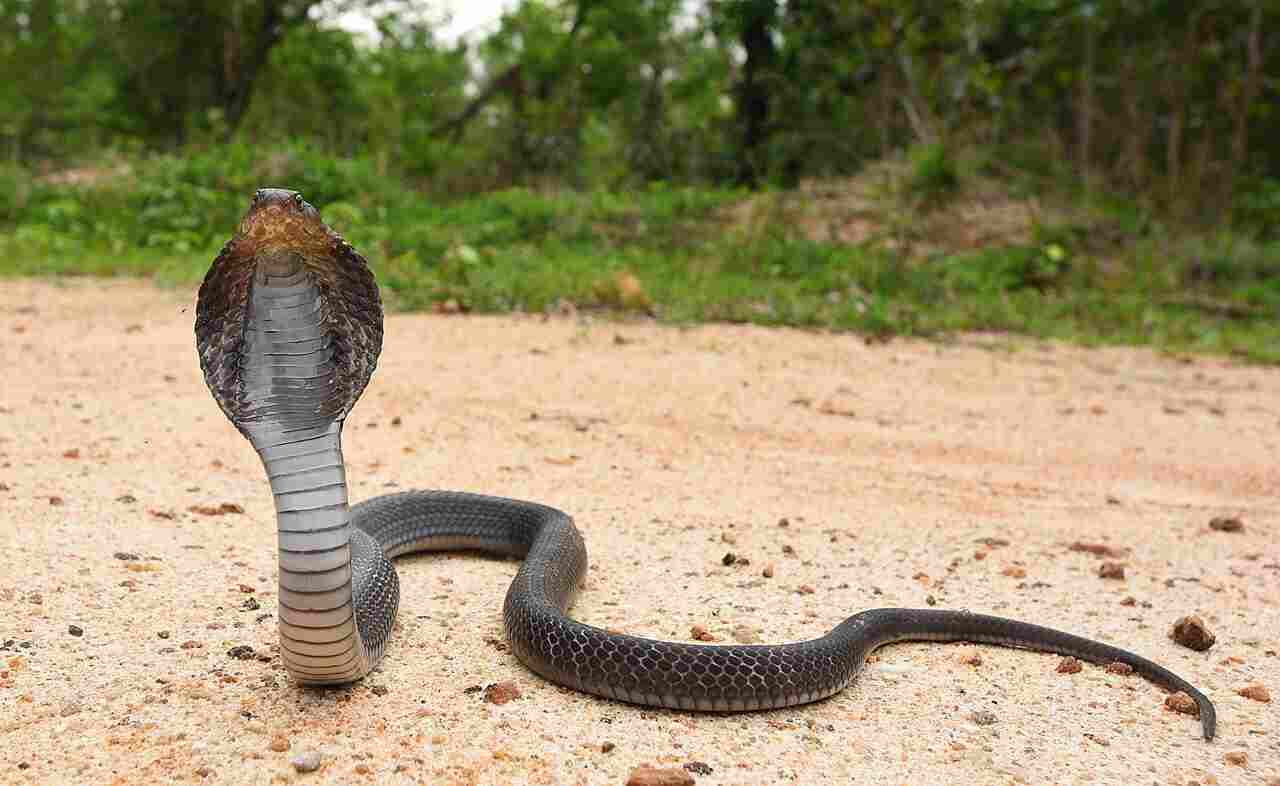
Mongoose:
Caution needed when encountering wild individuals, especially if they feel cornered
Avoid provoking or threatening actions to prevent defensive responses
Cobra:
Extreme caution required due to venomous nature
Keep a safe distance and seek professional assistance for removal if found near human dwellings
Comparison: Precautions with mongooses focus on avoiding aggression, while with cobras, the emphasis is on avoiding potentially lethal bites.
Ecological Implications: Educating communities about safety measures helps in minimizing conflicts and ensuring coexistence.
23. Conservation Status
Mongoose:
Conservation status varies by species; some are of least concern, while others may face threats
Cobra:
Conservation status varies by species; some face threats due to habitat loss and human persecution
Comparison: Both mongoose and cobra species may face conservation challenges, with some populations being more vulnerable.
Ecological Implications: Conservation efforts are crucial to maintaining biodiversity and ecological balance, considering the roles these species play in their respective ecosystems.
Summary of Comparison
I. Similarities:
Taxonomy: Both belong to the Carnivora order (mongoose) and Squamata order (cobra), reflecting their shared evolutionary paths.
Habitat Preferences: Both adapt to diverse environments, including grasslands and forests.
Danger Posed to Humans: While mongooses can be aggressive if provoked, both share a potential danger to humans, with cobras posing a more significant threat due to their venomous nature.
II. Differences:
Appearance: Mongoose has a furry, slender body, contrasting with the cobra’s scaly, hooded appearance.
Size and Weight: Cobras tend to be larger and slightly heavier on average than mongooses.
Bite Force: Mongooses generally possess a higher bite force compared to cobras.
Physical Offensive Advantages: Mongoose relies on physical prowess, while the cobra employs venom as a primary offensive tool.
Physical Defensive Advantages: Mongooses utilize agility, while cobras rely on venom and threat displays for defense.
Speed and Agility: Mongooses are significantly faster and more agile than cobras.
Overall Physical Capacity: Mongoose exhibits more versatile physical abilities; cobra excels in specific predatory strategies.
Mode of Feeding: Mongoose has a broader diet, including fruits and vegetation, compared to the cobra’s focus on venomous predation.
Intelligence: Mongooses showcase higher cognitive abilities, especially in social contexts.
Social Behavior: Mongooses are notably more social, while cobras are generally solitary.
Mode of Reproduction: Reproductive modes differ, with mongooses having live births and cobras laying eggs.
Parental Behavior: Mongooses show a higher degree of parental cooperation, while cobras exhibit more solitary care.
Proximity to Human-Inhabited Areas: Mongooses adapt more commonly to urban living compared to cobras.
Behavior Toward Humans: Mongooses may exhibit more diverse behaviors towards humans, while cobras typically avoid direct contact.
Danger Posed to Humans: Cobras pose a higher danger to humans due to their venomous bites, while mongooses are generally less hazardous.
Associated Precautions: Precautions with mongooses focus on avoiding aggression, while with cobras, the emphasis is on avoiding potentially lethal bites.
Conservation Status: Both mongoose and cobra species may face conservation challenges, with some populations being more vulnerable.
Conclusion: Ecological Roles, Conservation Considerations
Predatory Dynamics:
Mongooses play a role in controlling small mammal and insect populations through their carnivorous diet.
Cobras contribute to the regulation of rodent and bird populations as they are primary predators in their ecosystems.
Biodiversity Maintenance:
Both species, through their predatory roles, contribute to maintaining biodiversity by preventing overpopulation of certain prey species.
Ecosystem Balance:
Mongooses’ adaptability to diverse environments allows them to influence ecological balance in various ecosystems, including urban areas.
Cobras, with their specialized venomous predation, play a role in maintaining balance within specific habitats.
Seed Dispersal:
Mongooses, with occasional fruit consumption, may contribute to seed dispersal and plant diversity in their environments.
Human-Wildlife Interaction:
Mongooses’ proximity to human settlements and adaptability to urban areas necessitates understanding and managing human-wildlife interactions.
Cobras’ presence near human habitats requires precautions to minimize potential conflicts and threats to human safety.
Conservation Considerations:
Conservation efforts should address the specific vulnerabilities of mongoose and cobra populations, as their roles in ecosystems are crucial for overall ecological health.
Educational Awareness:
Raising awareness about these species, their behaviors, and the importance of their roles in ecosystems is essential for fostering coexistence and minimizing conflicts with humans.
Research Opportunities:
Continued research into the ecological roles, behaviors, and conservation status of mongooses and cobras is necessary for informed conservation and management strategies.
Adaptive Strategies:
Conservation measures should consider the adaptive strategies of mongooses to urban environments and cobras to human-inhabited areas to promote harmony between wildlife and human activities.
Holistic Ecosystem Approach:
Understanding the ecological roles of both mongooses and cobras requires a holistic approach that considers their interactions with other species and the broader ecosystem dynamics.
